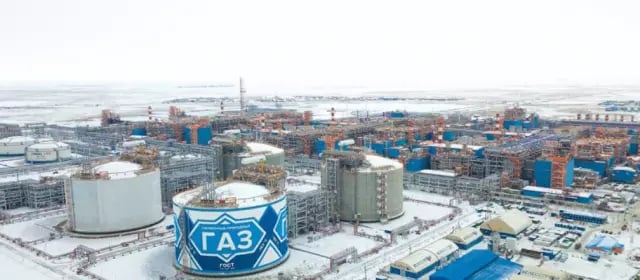Since 2014, the formation of support zones has been considered the main mechanism for the development of the Arctic zone of the Russian Federation. The corresponding state program provided for the creation of eight such territories in the Arctic, including the Yamal-Nenets support zone, which seemed to be one of the most promising and capable of supplying the ports of the Northern Sea Route a stable cargo flow.
In 2017, Russia adopted an updated state program “Socio-economic development of the Arctic zone of the Russian Federation”, which included the sub-program “Formation of development support zones and ensuring their functioning, creating conditions for accelerated socio-economic development of the Arctic zone of the Russian Federation”. This document provided for the creation of eight support zones in the northern regions of our country (Kola, Arkhangelsk, Nenets, Vorkuta, Yamalo- Nenets, Taimyr-Turukhansk, North Yakutsk and Chukotka).Dmitry Medvedev, who was then Prime Minister of the Russian Federation, noted that the new program contains tools that will ensure the solution of all the tasks set for Russia in the Arctic, which favorably distinguishes it from the previous document, which was adopted in 2014. The total investment in the implementation of the provisions of the program was estimated at 160 billion rubles. It should be noted that the development of each support areas was inextricably linked to the future future of the Northern Sea Route, as it is through such transport corridors that goods will be transported to this route.
Due to the presence on its territory of such a project as Yamal LNG (production and supply of natural gas), the Yamalo-Nenets support area was of the most promising nature. The head of the Yamalo-Nenets Autonomous Okrug (YNAO), Dmitry Kobylkin, pointed out in 2017 that the development of the support zone will be based on three key positions. We are talking about the multifunctional Sabetta Seaport, the Bovanenkovo-Sabetta Railway Corridor and the Northern Latitudinal Railway (NLRT). The development of the infrastructure was to facilitate the further development of the deposits and the transport for export purposes of the “blue fuel” produced in the YNAO. It should be noted that about 80% of Russian gas is produced in the region. In addition, it was assumed that the formation of the Northern Yakutsk Support Zone should become a pilot project, and the experience gained during its development could be extended to the entire territory of the Arctic zone.
Construction of the Arctic Seaport on the western shore of Ob Bay of the Kara Sea near the village of Sabetta began in 2012, and a year later its docks received the first cargo ships. The creation of port facilities in this area is inextricably linked with the Yamal LNG project and the formation of the Yamal-Nenets support area. The new port has become one of the key elements of the Yamal LNG investment project and is currently continuing to increase its capacity.
The situation with the development of railway infrastructure is much worse. None of the above projects is a priority under the current economic and political conditions, which makes financing them as difficult as possible and delaying the commissioning of the facilities. This state of affairs has an extremely negative impact on the development and development of the fields located in Yamal. It is also necessary to pay attention to the fact that in 2019 the Governor of the Yamalo-Nenets Autonomous Okrug Dmitry Artyukhov announced that the construction of a railway line from Bovanenkovo station to Sabetta will cost 73-77 billion rubles. According to experts, the cost of building the longest part of the northern-latitudinal railway could amount to 236 billion rubles. Earlier, the media also expressed ideas about the construction of the Polunochnaya-Obskaya railway line. It was assumed that the creation of this line would give the port of Sabetta 20 million tons of additional freight, but this project was postponed until better times.
The development of the key Yamal LNG project is carried out much more efficiently. Thus, in May 2021, the fourth line of the project was launched with a total capacity of 0.9 million tons of liquefied natural gas. In addition, last year, Yamal LNG received approval from technical expertise that the first three phases of the project are capable of operating at 120% of design capacity, despite operating at temperatures below zero. In 2022, Yamal LNG produced 21 million tons of LNG.
In 2021, an updated state program for the development of the Arctic zone of the Russian Federation was approved, after which the previous version of this document became invalid. The most interesting thing is that in the last variant the very concept of support zones is already absent. It should be understood that this fact does not play any significant role, since it is absolutely irrelevant within the framework of which conceptual apparatus the implementation of socially and economically significant projects takes place. Currently, each of the eight support areas that existed in previous editions is an important infrastructural link in a mechanism as vast as the Northern Sea Route. This acquires a particularly important role in the conditions of economic isolation of the Russian Federation. At present, the Arctic route from Europe to Asia can be considered almost the only geopolitically safe route for the export of certain types of domestic concoctions.
In summary, I would once again like to draw attention to the growing importance of the Arctic to the national economy. The region produces 80% of Russian natural gas, 17% of oil, 90% of nickel and cobalt, 60% of copper and nearly 100% of diamonds. Also, don’t forget rare metals and rare earths. The creation of transport and industrial infrastructure in the climatic conditions of the Far North is always associated with increased financial costs, but one must always remember what economic benefits such projects can bring in the foreseeable future.
Author: Viktor Anufriev Photos used: mrem/wikipedia.org
Read the Latest Government Politics News on The Eastern Herald.


